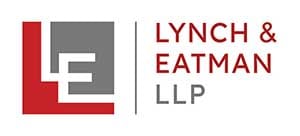3 Potential Pitfalls for Landlords in Waiver Documents
If you own any property which you lease for retail or restaurant uses, you have probably received a request from your tenant for a “waiver” provided by the tenant’s lender. Our clients with significant amounts of retail square footage receive these requests on a regular basis.
These documents are always submitted by the tenant on pre-printed forms with the admonition that their lender will require the document be signed “as is” in order for the tenant to obtain its financing.
As with many things, our experience with landlords’ waivers for retail tenants is that a little bit of work on the front end can avoid significant problems down the road. Specifically, landlords should watch out for three potentially problematic issues often found within the terms of these waivers.
Lender’s Rights on Default
First, the landlord may not want the lender to have the right to come in and hold foreclosure or going out of business sales at the premises. The lender should not have the right to stage going out of business sales at the premises which could impair the image of the landlord’s project generally. This is particularly true in shopping centers or multi-tenant projects where the landlord is, understandably, concerned about the image of the project.
The lender’s rights in the event of a default by the tenant on its loan should be limited to coming onto the premises to remove the collateral.
Lender’s Right to Retrieve Property after Lease Expiration
Secondly, there needs to be a limit on the time that the lender can come on the premises after the lease is expired and remove the property of the tenant. Most landlord waivers are open ended and essentially give the lender an ongoing right to remove its collateral. This frequently makes it difficult for the landlord, after termination of the lease for tenant default, to know when it can get rid of the property that the lender is not going to retrieve.
The lender should have a reasonable period of time (60 to 90 days) after receipt of notice from the landlord that the lease is going to be terminated for tenant default, to come onto the premises and remove the tenant’s property which is part of the lender’s collateral package.
Lender’s Right to Assume Tenant Obligations
Lastly, if the waiver agreement contains any terms allowing the lender to assume the obligations of the tenant, that right should be conditioned upon the lender curing any existing defaults.
Lenders frequently like to have the right to assume the tenant’s rights under the lease in order to then “sell” the lease and the collateral to recoup the money owed to the lender. This right, if granted to the lender, should be subject to all the terms of the lease (including the landlord’s right to approve any assignee) and should require that all defaults be cured within the applicable cure periods.
In reality, the document is not as innocuous as it appears, and most lenders are willing to address several key landlord concerns. If you have questions about a waiver document, or other commercial real estate questions, contact our office to set up a time to discuss.

